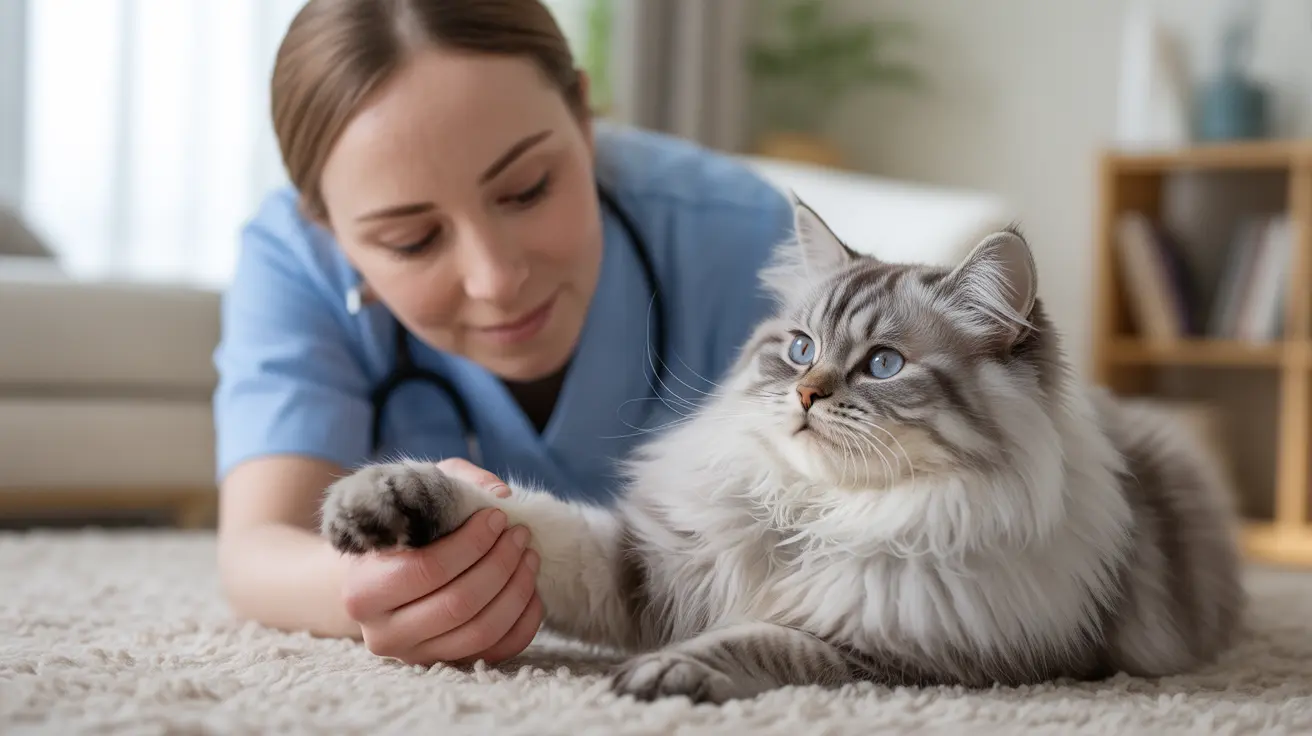Understanding Cat Fight Injuries
When your cat gets scratched by another cat, it's crucial to act quickly and appropriately. Cat scratches can range from minor surface wounds to serious injuries that require immediate veterinary attention. These injuries are particularly common in outdoor cats and multi-cat households, where territorial disputes or resource competition can lead to confrontations.
Understanding the severity of your cat's scratch wound and knowing how to respond can make the difference between a quick recovery and potential complications. Let's explore the essential steps you need to take when your cat experiences a scratch injury.
Immediate First Aid Steps
The first moments after discovering your cat's scratch wound are critical. Here's what you should do:
Assess the Wound
- Carefully examine the scratch for depth and location
- Check for active bleeding or visible debris
- Note your cat's behavior and pain level
Clean the Injury
If the scratch appears superficial and your cat allows handling:
- Gently clean the area with warm saline solution
- Remove surrounding fur if necessary
- Pat dry with clean gauze
- Apply cat-safe antibiotic ointment if recommended by your vet
Signs of Serious Injury
Some scratches require immediate veterinary attention. Watch for these warning signs:
- Deep punctures or gaping wounds
- Continuous bleeding
- Signs of infection (swelling, redness, warmth)
- Changes in behavior or appetite
- Lethargy or fever
- Excessive grooming of the injured area
Professional Treatment Options
Your veterinarian may recommend various treatments depending on the severity of the scratch:
- Professional wound cleaning and assessment
- Antibiotics to prevent infection
- Pain medication if needed
- Possible sutures for deeper wounds
- Follow-up appointments to monitor healing
Prevention Strategies
To minimize future scratch incidents:
- Supervise interactions between cats
- Provide multiple resources (litter boxes, food bowls, resting areas)
- Consider indoor-only living
- Maintain regular veterinary check-ups
- Address territorial issues through environmental enrichment
Long-term Care and Monitoring
After initial treatment, monitor your cat's recovery by:
- Keeping the wound clean and dry
- Preventing your cat from scratching or licking the area
- Watching for signs of infection
- Following all veterinary instructions
- Completing any prescribed medication courses
Frequently Asked Questions
What should I do immediately if my cat got scratched by another cat?
Assess the wound's severity, clean it with saline solution if superficial, and seek veterinary care if the scratch is deep, bleeding, or shows signs of infection.
How can I tell if my cat's scratch or bite wound is infected?
Watch for redness, swelling, warmth around the wound, pus or discharge, foul odor, and changes in your cat's behavior or appetite.
When should I take my cat to the veterinarian after a cat scratch or bite?
Seek immediate veterinary care if the wound is deep, continues bleeding, shows signs of infection, or if your cat displays behavioral changes or seems unwell.
What home care steps can I safely perform to clean and treat my cat's scratch?
For minor scratches, clean the area with saline solution, keep it dry, and prevent your cat from licking or scratching the wound. Never use hydrogen peroxide or alcohol.
How can I prevent cat scratches and bites in multi-cat or outdoor environments?
Provide adequate resources, separate fighting cats, consider keeping cats indoors, and address territorial issues through environmental enrichment and proper introduction techniques.
Conclusion
While cat scratches are common, proper assessment and prompt treatment are essential for preventing complications. By following these guidelines and knowing when to seek professional help, you can ensure your cat receives the appropriate care needed for a full recovery. Remember that prevention through proper cat management is always better than dealing with injuries after they occur.






